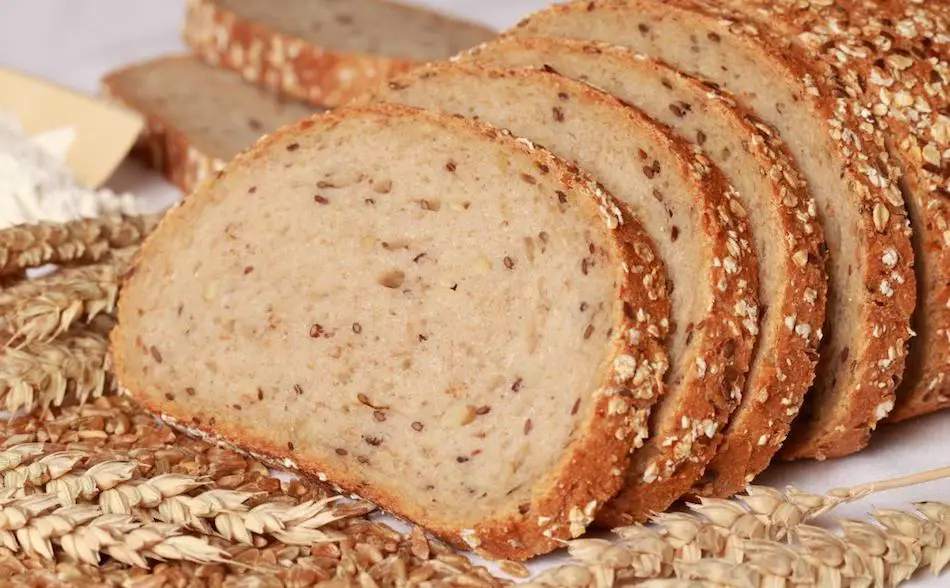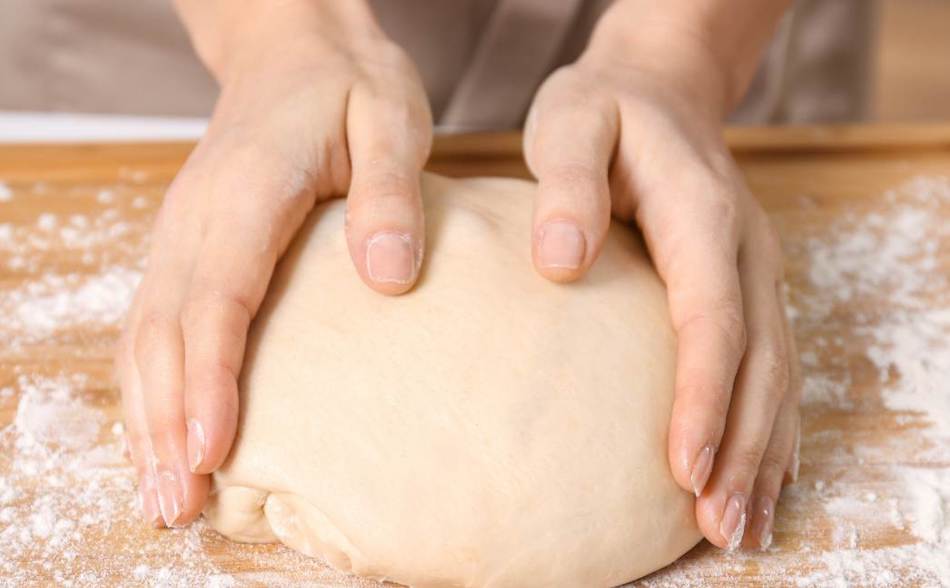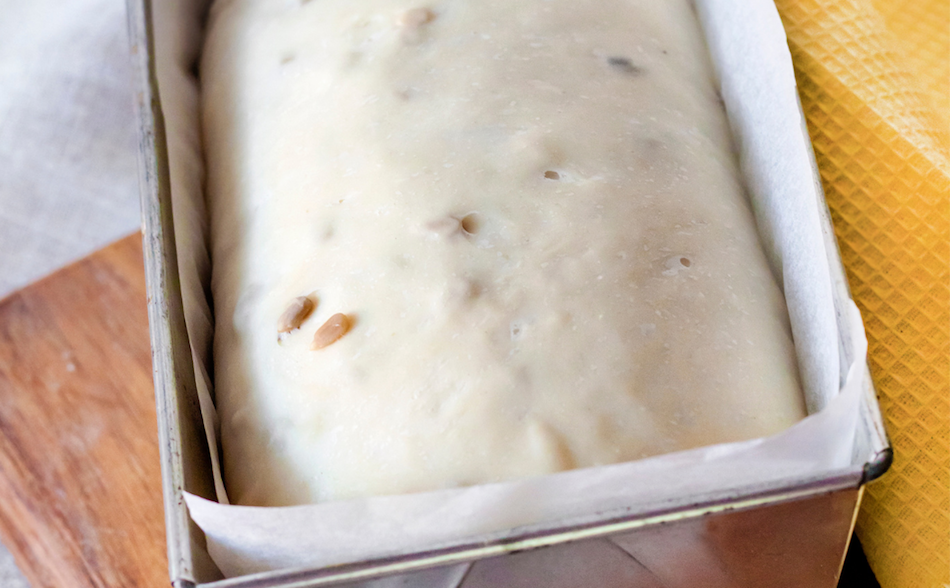
There’s nothing quite like a slice of freshly baked bread, warm from the oven and with a fluffy, light texture. But for many bakers, achieving that perfect fluffiness can be a challenge, especially when it comes to whole wheat bread. With the right techniques, ingredients, and a bit of scientific know-how, you can achieve fluffy whole wheat bread that’s just as soft and delicious as any white bread. In this article, we’ll share our top tips for making fluffy whole wheat bread, from choosing the right flour to kneading the dough, proofing, baking, and more.
To make whole wheat bread fluffy when baking, there are several key factors to keep in mind. First, choose the right flour – a flour with a higher protein content will produce a lighter and fluffier bread. Properly measuring all ingredients, including water and yeast, is also crucial for achieving the desired texture. Kneading the dough thoroughly and properly proofing it at the right temperature and humidity level will help to develop gluten and promote a good rise. Additionally, adding small amounts of sugar, honey, or other sweeteners can help to activate the yeast and promote fluffiness. Finally, baking the bread at the right temperature and for the right amount of time, as well as allowing it to rest after baking, will ensure that your whole wheat bread comes out perfectly fluffy and delicious.
| Tip | Instructions |
|---|---|
| Use fresh ingredients | Make sure to use fresh, high-quality ingredients, especially the yeast. |
| Measure carefully | Use measuring cups and spoons to accurately measure your flour, water, yeast, and other ingredients. |
| Knead properly | Knead the dough for at least 10-15 minutes, or until it’s smooth and elastic. |
| Proof the dough properly | Proof the dough in a warm and humid environment, and give it enough time to rise properly. |
| Use the right oven temperature | Bake the bread at the right temperature, usually around 375°F (190°C), and for the right amount of time. |
| Rest the dough before baking | Let the dough rest for 15-30 minutes before baking to allow the gluten to relax and the yeast to continue to produce gas. |
| Use steam to achieve a fluffy crust | Use a tray of boiling water in the oven or spray the bread with water before baking to create a humid environment. |
| Avoid common mistakes | Avoid common mistakes, such as using old yeast, adding too much flour, over-baking the bread, and not kneading or proofing the dough properly. |
| Experiment with sweeteners, milk, and eggs | Try adding honey, sugar, milk, or eggs to your dough for extra flavor and fluffiness. |
| Use an oven thermometer | Use an oven thermometer to ensure that the temperature is accurate and adjust the time and temperature as needed. |
What are the best tips for achieving a fluffy texture in whole wheat bread?
If you’re looking to make some seriously fluffy whole wheat bread, here are a few tips to get you started. First things first, choose a flour with a higher protein content. That way, you’ll end up with a lighter and fluffier bread. Make sure to use the proper amount of yeast and water, and measure your ingredients properly. Get your hands in there and knead the dough thoroughly to develop gluten and promote a good rise. Once the dough is ready, let it proof at the right temperature and humidity level. To really up the fluff factor, add a little bit of sugar, honey, or other sweeteners to activate the yeast. Finally, bake the bread at the right temperature and for the right amount of time, and allow it to rest before cutting into it.
Are there any secrets to making whole wheat bread fluffy and light?
Yes, there are a few secrets to making whole wheat bread fluffy and light. One of the most important secrets is to choose the right type of flour. Look for whole wheat flour with a higher protein content, as this will help to produce a lighter and fluffier bread. Additionally, make sure that all of your ingredients are fresh and of good quality. Another secret is to properly measure all ingredients, including the water and yeast. Kneading the dough well and allowing it to properly rise is also crucial to developing gluten and promoting a good rise. Finally, adding small amounts of sweeteners, such as honey or sugar, can help to activate the yeast and promote fluffiness.
What is the science behind making whole wheat bread fluffy?
When it comes to making whole wheat bread fluffy, there is some science involved. Whole wheat flour is denser and heavier than white flour, which can make it more challenging to achieve a light and fluffy texture. To make it fluffy, it’s important to develop the gluten in the dough. Gluten is a protein that gives bread its structure and allows it to rise. When you knead the dough, you’re developing the gluten, which will create pockets of air and help the bread to rise. Additionally, adding sweeteners like sugar or honey to the dough can help to activate the yeast, which produces carbon dioxide gas and causes the bread to rise. Finally, baking the bread at the right temperature and for the right amount of time is important to ensure that it sets and doesn’t collapse.
The Importance of Properly Measuring Ingredients
Properly measuring your ingredients is crucial to making fluffy whole wheat bread. Baking is an exact science, and even a small measurement error can throw off the entire recipe. That’s why it’s important to measure your ingredients carefully and accurately. Use measuring cups and spoons to ensure that you’re adding the right amount of flour, water, yeast, and other ingredients to your dough. When measuring flour, make sure to spoon it into the measuring cup and level it off with a knife, rather than scooping it directly from the bag. This will help to ensure that you don’t accidentally add too much flour, which can make your bread dense and heavy. Similarly, be careful not to add too much or too little water, as this can affect the texture and rise of the bread.

The Role of Yeast in Fluffy Whole Wheat Bread
Yeast plays a crucial role in making fluffy whole wheat bread. Yeast is a type of fungus that feeds on sugar and produces carbon dioxide gas, which causes bread dough to rise. In whole wheat bread, the yeast needs to work harder to produce the same rise as in white bread, due to the denser and heavier nature of whole wheat flour. That’s why it’s important to use the right amount of yeast in your recipe, and to give it time to properly activate. Make sure that your yeast is fresh and hasn’t expired, as old yeast may not be as effective in causing the dough to rise. You can also help to activate the yeast by adding a small amount of sweetener, such as honey or sugar, to the dough. Finally, make sure to properly proof the dough at the right temperature and humidity level, which will give the yeast time to work its magic and produce a light and fluffy whole wheat bread.
How to Knead Dough for Maximum Fluffiness
Kneading dough is an important step in making fluffy whole wheat bread. Kneading helps to develop gluten, which gives bread its structure and allows it to rise. To knead dough for maximum fluffiness, start by mixing your ingredients together until they form a shaggy dough. Then, turn the dough out onto a lightly floured surface and begin to knead it with the heels of your hands. Use a push and pull motion to stretch and fold the dough, working it for about 10 to 15 minutes. Don’t be afraid to use a little extra flour to prevent the dough from sticking to the surface. The dough should feel smooth and elastic when it’s properly kneaded. Be careful not to over-knead the dough, as this can cause it to become tough and dense. Once you’ve kneaded the dough to the right consistency, shape it into a ball and place it in a greased bowl to proof. By kneading your dough properly, you’ll be on your way to achieving perfectly fluffy whole wheat bread.

Tips for Properly Proofing Your Whole Wheat Bread Dough
Properly proofing your whole wheat bread dough is crucial to achieving fluffy and light bread. During proofing, the yeast in the dough produces carbon dioxide gas, which causes the bread to rise. To properly proof your dough, there are a few tips to keep in mind. First, choose a warm and humid place to proof the dough, as this will help the yeast to work its magic. A temperature of around 75-80°F (24-27°C) is ideal, with a humidity level of around 70-80%. You can create a warm and humid environment by placing a bowl of water in the oven with your dough, or by covering the dough with a damp cloth. Be patient and give the dough plenty of time to proof – usually 1-2 hours is enough, but it may take longer depending on the temperature and humidity levels. To check if the dough is properly proofed, press a finger gently into the dough – if it springs back slowly, it’s ready to bake. Finally, be careful not to over-proof the dough, as this can cause it to collapse and lose its fluffiness.
The Benefits of Adding Sweeteners to Whole Wheat Bread Dough
Adding sweeteners to whole wheat bread dough can have several benefits, including helping to activate the yeast and producing a lighter and fluffier bread. Yeast feeds on sugar, so adding a small amount of sweetener, such as honey, sugar, or molasses, can help to kick-start the fermentation process and cause the dough to rise more effectively. Additionally, sweeteners can help to improve the flavor and texture of the bread, as they help to tenderize the crumb and create a subtle sweetness. However, it’s important not to add too much sweetener, as this can cause the dough to become overly sticky and difficult to work with. A good rule of thumb is to add no more than 2 tablespoons of sweetener for every 3 cups of flour. By adding a small amount of sweetener to your whole wheat bread dough, you’ll be able to achieve a lighter and fluffier texture, as well as a more delicious and flavorful bread.
Using Milk and Eggs for Extra Fluffiness
Using milk and eggs in your whole wheat bread recipe can help to achieve extra fluffiness and lightness. Milk contains protein, sugar, and fat, which can help to improve the texture and flavor of the bread. Eggs, on the other hand, are high in protein and help to give the bread structure and stability.
When using milk and eggs in your recipe, make sure to use room temperature ingredients, as this will help them to blend more easily with the other ingredients. Beat the eggs and milk together before adding them to the dough, and mix them in gradually, alternating with the dry ingredients. Be careful not to overwork the dough, as this can cause the bread to become dense and tough. By adding milk and eggs to your whole wheat bread recipe, you can achieve a soft, fluffy, and delicious loaf that’s perfect for sandwiches, toast, or simply enjoying on its own.
The Role of Salt in Fluffy Whole Wheat Bread
Salt is an important ingredient in bread baking, as it helps to balance the flavor and promote the gluten development. In whole wheat bread, salt also plays a crucial role in regulating the fermentation process, which is essential for achieving a light and fluffy texture. Salt helps to control the activity of the yeast, preventing it from becoming too active and causing the dough to over-rise and then collapse. Additionally, salt helps to strengthen the gluten, which gives the bread its structure and allows it to rise properly. When adding salt to your whole wheat bread recipe, make sure to measure it carefully and mix it in evenly with the other dry ingredients. Too much or too little salt can affect the flavor and texture of the bread, so use the right amount according to your recipe. By understanding the role of salt in making fluffy whole wheat bread, you’ll be able to achieve the perfect balance of flavor and texture in your bread.
The Importance of Resting Dough Before Baking
Resting your dough before baking is an important step in achieving fluffy and light whole wheat bread. When you rest the dough, it allows the gluten to relax and the yeast to continue to produce gas, which results in a better rise and more open crumb. Resting also allows the dough to fully absorb the moisture and flavors of the ingredients, resulting in a more flavorful bread. To rest your dough, shape it into a ball or loaf and place it in a greased bowl, covering it with a damp cloth or plastic wrap.
Let the dough rest at room temperature for about 15-30 minutes, depending on the recipe. You can also let it rest in the refrigerator overnight for a longer, slower rise and more complex flavor. Resting your dough before baking will help to ensure that it bakes evenly and rises properly, resulting in a fluffy and delicious whole wheat bread.
Getting the Perfect Rise in Your Whole Wheat Bread Dough
Getting the right rise is essential to achieving a light, fluffy texture in your bread. First things first, make sure you’re using fresh, high-quality ingredients, especially the yeast. Yeast is the key player in causing the dough to rise, so make sure it’s fresh and hasn’t expired. Next, choose a warm and humid place to proof the dough, as this will help the yeast to work its magic.
A temperature of around 75-80°F (24-27°C) is ideal, with a humidity level of around 70-80%. You can create a warm and humid environment by placing a bowl of water in the oven with your dough, or by covering the dough with a damp cloth. Be patient and give the dough plenty of time to proof – usually 1-2 hours is enough, but it may take longer depending on the temperature and humidity levels. To get the perfect rise, make sure you knead the dough properly and let it rest before baking. Finally, make sure to bake the bread at the right temperature and for the right amount of time, and allow it to cool and rest before slicing. By following these tips and taking your time, you’ll be well on your way to getting the perfect rise in your whole wheat bread dough.

Baking Your Whole Wheat Bread to Fluffy Perfection
Baking your whole wheat bread to fluffy perfection is the final step in achieving the perfect loaf. To bake your bread to perfection, make sure your oven is preheated to the right temperature, usually around 375°F (190°C). Before baking, you can also brush the top of the dough with a little bit of water or egg wash to create a shiny and crispy crust. Make sure to place the bread in the center of the oven, and bake for the right amount of time, usually 35-40 minutes. The bread should be golden brown and sound hollow when tapped on the bottom. Once you remove the bread from the oven, let it rest on a wire rack to cool and finish setting. Don’t cut into it right away – this can cause it to become dense and gummy. By taking your time and baking your whole wheat bread properly, you’ll be able to achieve a soft and fluffy texture that’s perfect for all your baking needs.
Choosing the Right Oven Temperature for Fluffy Whole Wheat Bread
Choosing the right oven temperature is crucial for achieving fluffy and delicious whole wheat bread. Too low of a temperature and the bread won’t rise properly, while too high of a temperature can cause the bread to burn and become overly crispy. Generally, the ideal oven temperature for whole wheat bread is around 375°F (190°C). This temperature allows the bread to rise properly and develop a crispy, golden crust. However, oven temperatures can vary, so it’s important to use an oven thermometer to ensure that the temperature is accurate. Also, keep in mind that the baking time can vary depending on the size and shape of the loaf, so it’s important to monitor the bread as it bakes and adjust the time and temperature as needed. By choosing the right oven temperature and monitoring the baking process, you’ll be well on your way to achieving the perfect fluffy whole wheat bread.
Using Steam to Achieve a Fluffy Crust
Using steam is a great technique for achieving a fluffy and crispy crust on your whole wheat bread. Steam helps to create a humid environment in the oven, which allows the crust to expand and become crispy without cracking or becoming too tough. To use steam, there are a few methods you can try. One popular method is to place a tray of boiling water in the bottom of the oven as you preheat it. The steam from the boiling water will rise and create a humid environment in the oven. Another method is to spray the bread with water before placing it in the oven, or to brush it with water or egg wash. This helps to create a moist surface on the bread, which encourages steam to form during baking. You can also use a Dutch oven or other covered baking vessel to trap steam and create a humid environment. Be careful when opening the oven to check on the bread, as the steam can be very hot. By using steam, you’ll be able to achieve a perfectly fluffy and crispy crust on your whole wheat bread.
Avoiding Common Mistakes in Making Fluffy Whole Wheat Bread
Avoiding common mistakes is key to making fluffy and delicious whole wheat bread. Here are some common mistakes to look out for, and tips on how to avoid them:
- Using old or expired yeast: Make sure to use fresh, high-quality yeast, as old or expired yeast won’t work effectively.
- Adding too much flour: Use measuring cups and spoons to accurately measure your flour, and avoid adding too much flour to the dough, as this can make the bread dense and heavy.
- Not kneading the dough properly: Properly kneading the dough helps to develop the gluten and create a fluffy texture. Make sure to knead the dough for at least 10-15 minutes, or until it’s smooth and elastic.
- Not proofing the dough properly: Properly proofing the dough allows the yeast to work its magic and create a light and fluffy texture. Make sure to proof the dough in a warm and humid environment, and give it enough time to rise properly.
- Over-baking the bread: Over-baking the bread can cause it to become dry and dense. Make sure to bake the bread at the right temperature and for the right amount of time, and allow it to cool and rest before slicing.
Troubleshooting Common Issues with Whole Wheat Bread Dough
Even the most experienced bakers sometimes run into issues when making whole wheat bread dough. Here are some common issues you may encounter, and tips on how to troubleshoot them:
- The dough isn’t rising: If your dough isn’t rising properly, it may be due to old or expired yeast, or to proofing the dough in a place that’s too cold or dry. Make sure to use fresh yeast, proof the dough in a warm and humid environment, and give it enough time to rise.
- The dough is too dry or crumbly: If your dough is too dry or crumbly, it may be due to adding too much flour or not enough liquid. Make sure to accurately measure your ingredients, and adjust the amount of liquid or flour as needed.
- The dough is too sticky or wet: If your dough is too sticky or wet, it may be due to adding too much liquid or not enough flour. Adjust the amount of liquid or flour as needed, and consider adding a little more flour to your work surface when kneading the dough.
- The bread is too dense: If your bread is too dense, it may be due to not kneading the dough enough, not proofing it properly, or not adding enough yeast. Make sure to knead the dough for at least 10-15 minutes, proof it in a warm and humid environment, and use the right amount of yeast.
- The bread is too crumbly or dry: If your bread is too crumbly or dry, it may be due to not adding enough liquid, or to over-baking the bread. Make sure to use the right amount of liquid, and bake the bread for the right amount of time and at the right temperature.
Whole Wheat Recipe: Step-by-Step
| Step | Instructions |
|---|---|
| 1 | In a mixing bowl, combine 3 cups of whole wheat flour, 1 tablespoon of salt, and 2 tablespoons of honey or sugar. |
| 2 | In a separate bowl, whisk together 1 1/4 cups of warm water and 2 1/4 teaspoons of active dry yeast. Let the mixture sit for a few minutes until the yeast is activated. |
| 3 | Add the yeast mixture to the dry ingredients, along with 2 tablespoons of melted butter or olive oil. Mix until a shaggy dough forms. |
| 4 | Knead the dough on a floured surface for 10-15 minutes, or until it’s smooth and elastic. |
| 5 | Place the dough in a greased bowl, cover it with a damp cloth, and let it rise in a warm and humid place for 1-2 hours, or until it’s doubled in size. |
| 6 | Punch down the dough and shape it into a ball or loaf. Let it rest for 15-30 minutes before baking. |
| 7 | Preheat the oven to 375°F (190°C). Place the dough on a greased baking sheet or in a Dutch oven. |
| 8 | Optional: Brush the top of the dough with water or egg wash to create a shiny and crispy crust. |
| 9 | Bake for 35-40 minutes, or until the bread is golden brown and sounds hollow when tapped on the bottom. |
| 10 | Let the bread cool on a wire rack before slicing and serving. |

